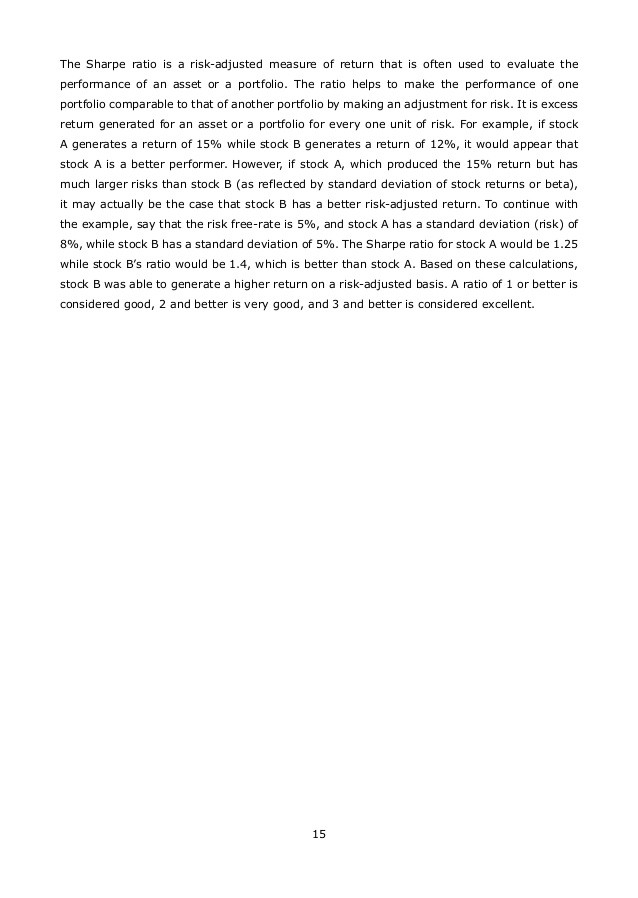The Sharpe Ratio Insight into RiskAdjusted Performance Financial Web
Post on: 31 Май, 2015 No Comment

The Sharpe ratio is named for William Forsyth Sharpe, a winner of the Nobel Prize in Economics. He developed a formula to estimate the relative value of a stock based on its risk and reward. The main aspects of the formula are asset return, risk free return and the standard deviation of the asset. These are complicated concepts for a novice investor, but they can provide insight into the viability of profit on a stock purchase if used correctly in the Sharpe ratio formula.
The Formula
Basically, the formula finds the difference between the asset return and the risk free rate of return or other benchmark. After this difference is found, it is divided by the standard deviation of the asset return in order to determine the Sharpe ratio. This is expressed mathematically in the following way:
S = (R — Rf)/O
S is Sharpe ratio. R is the asset return. Rf is the benchmark return, which is usually the risk free rate of return. O is the standard deviation. In order for the formula to be accurate, this underlying data must be accurate. You, as an investor, will not likely know this type of information on a stock, but the financial firm advising you will analyze stocks according to these figures, and you can ask about the Sharpe ratio on the stock.
Benefits of the Sharpe Ratio
All investing is a calculation of risk versus reward. Higher reward investments tend to be higher risk. However, if the risk is disproportionately higher than the potential reward, then the risk is not worth taking. The Sharpe ratio attempts to measure this fact. How much is the risk worth the reward? Would it be wiser to simply hold a less risky stock with a smaller change of reward because the two ends are more in line? Generally speaking, investors are advised to purchase stocks with the highest Sharpe ratio, or potential reward based on risk, available.
Sharpe Ratio in Mutual Fund Investing
When you invest in a mutual fun, you are joining with a group of investors collectively entering a risk pool. By forming a larger investment pool, you can gain exposure to higher risk and higher reward stocks. Ultimately, though, you should be looking to open up the chance to invest in stocks with a higher Sharpe ratio. Mutual funds are often not subject to the same guidelines as individual investors, so you can potentially unlock investment opportunities in higher Sharpe ratio stocks.
Shortcomings of the Sharpe Ratio
This formula is only accurate if they underlying data is accurate. In recent years, many have questioned whether the formula can accurately account for risk in a declining or erratic market. One criticism is that the formula relies on standard deviation. When a market is very erratic, a standard deviation may be skewed in one direction or another due to an unusually high or low swing. Ultimately, the question is whether relying on the Sharpe ratio alone is a viable investment strategy. While it can be a helpful indicator of the profitability of a stock, it may not be the only factor worth investigating.
$7 Online Trading. Fast executions. Only at Scottrade














